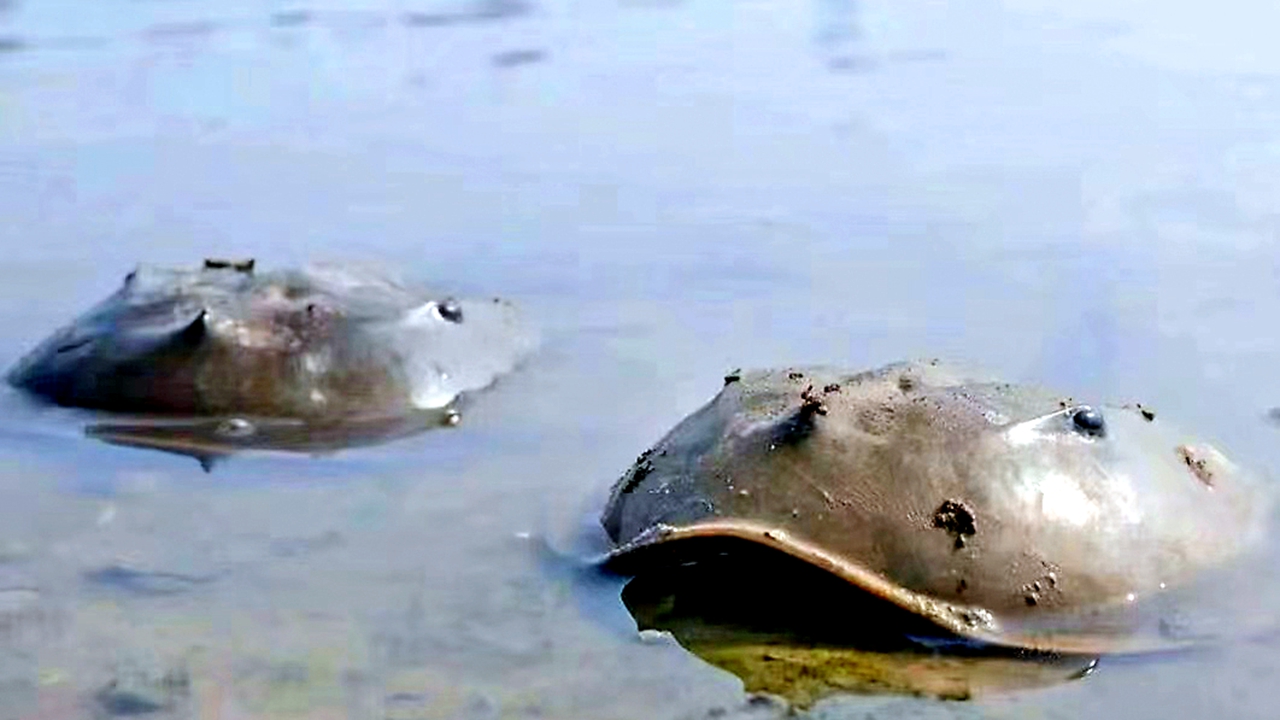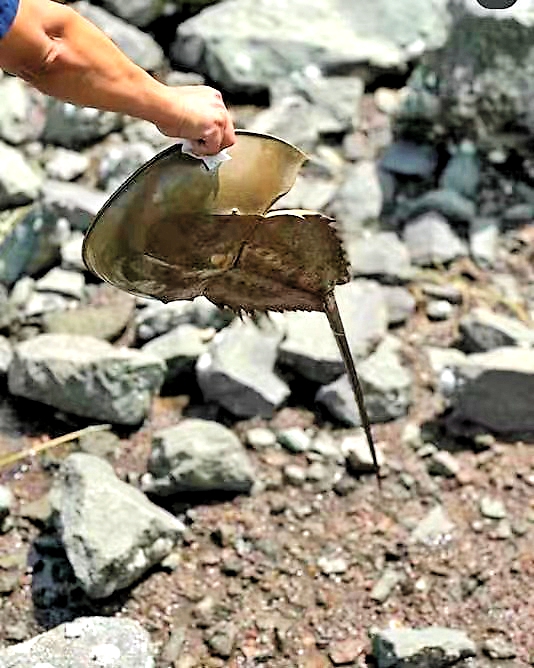Rare blue-blooded 'living fossil' spotted
Writer: | Editor: Lin Qiuying | From: Shenzhen Daily | Updated: 2024-07-12

Round-tail horseshoe crabs spotted in Shenzhen Bay in April. File photos
In a remarkable find, a visitor to Shenzhen Bay Park recently encountered a unique marine creature often dubbed a "living fossil" — the horseshoe crab. This ancient animal, with its alien-like appearance and blue blood, is officially listed as a second-class protected wild animal in China.
Horseshoe crabs captivate with their horseshoe-shaped carapace and serrated spines. Their blue blood, which is due to copper-based hemocyanin, is vital in the medical field for creating the Limulus Amebocyte Lysate reagent used in bacterial endotoxin testing. This medical value, however, has led to their overexploitation.
Known as “living fossils,” horseshoe crabs have a lineage dating back to the Ordovician period, approximately 475 million years ago. Despite the passage of eons, these creatures have retained their primordial form, a testament to their extraordinary resilience and adaptability.

A horseshoe crab spotted in Shenzhen Bay in June.
The recent sighting in Shenzhen Bay Park is a significant environmental marker, media reports said. The individual who found the horseshoe crab responsibly returned it to the sea, demonstrating an increased public awareness of wildlife protection.
This sighting occurred approximately three months after Professor Zhou Haichao’s team from Shenzhen University discovered a pair of round-tail horseshoe crabs in the mangroves of the Shenzhen River Delta during ecological restoration monitoring in April. Their find marked the first recorded sighting of round-tail horseshoe crabs in the estuary region of Shenzhen Bay, signaling potential improvements in local biodiversity.
Shenzhen Bay’s long-term fishing ban has created an environment free of fishing gear and crab traps, potentially facilitating the breeding of round-tail horseshoe crabs. The presence of a mating pair suggests that the mangroves might already be supporting a breeding population of these ancient creatures, indicating positive strides in local conservation efforts.
In China, both horseshoe crabs and round-tail horseshoe crabs are protected under the country’s wildlife protection laws, underscoring the need for continued efforts to safeguard their populations from threats like overharvesting and habitat destruction.